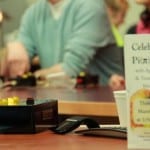Today the 28th of February is National Public Sleeping Day. A day to sleep in public- you can sleep on a park bench if it’s not snowing. You can doze on a blanket at McBride Park, again if it’s not too cold, but best of all, some people opt to sleep on the job at their own risk.
Sleep: A basic necessity which is as important
as air, food and water. We spend as much as a third of our lives sleeping and
yet, sleep is often lost or taken for granted when trying to meet a deadline or
care for ill family members. More than half of us don’t get enough sleep. Not
only does this leave us tired and not at our best, but poor sleep can affect our
ability to concentrate, retain new information, and can affect your judgment and
mood. Insufficient sleep may also lead to poor health. Studies reveal that
people who sleep poorly are at greater risk for a number of health concerns from
obesity to high blood pressure. http://www.uiowa.edu/hr/fsseap/sleep/index.html
There are all kinds of sleep resources at the above website, but wherever you choose to sleep today, we hope it is peaceful and restful like the creator of this holiday. Nobody knows the origin; the creator was obviously sleeping on the job.
Some books on sleep at the Lichtenberger Engineering Library:
| Sleep deprivation countermeasures for motorist safety / Jane C. Stutts. Washington, D.C. : National Academy Press, 2000. |
Sleep, sleepiness and traffic safety / Joris C. Verster and Charles F.P. George, editors. New York : Nova Science Publishers, c2011.
Sleep, wakefulness and circadian rhythm. [Neuilly sur Seine, France] : North Atlantic
Treaty Organization, Advisory Group for Aerospace Research and Development,
1979.
Quantifying the cognitive abilities and performance of drivers with sleep disorders by Amit K. Paul. 2005.












